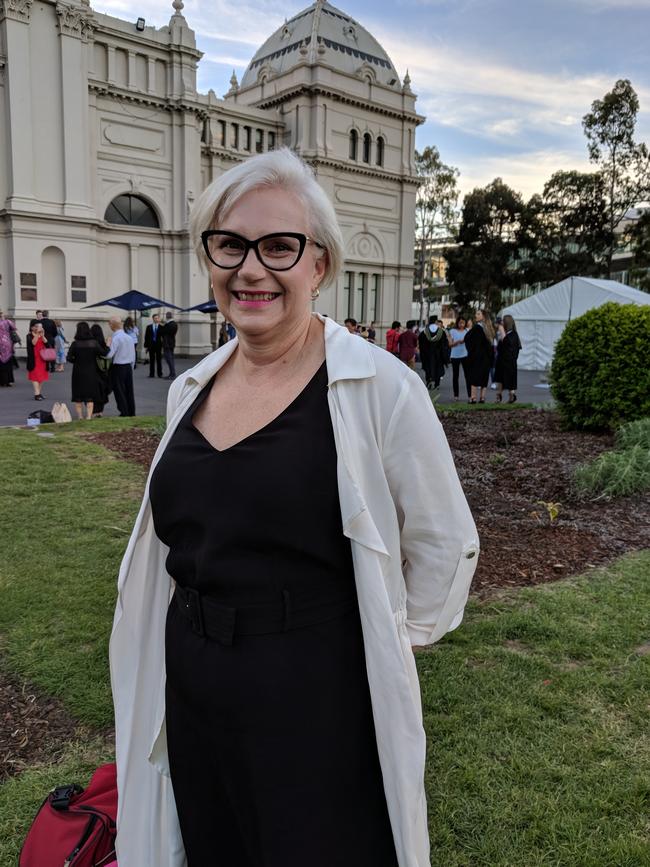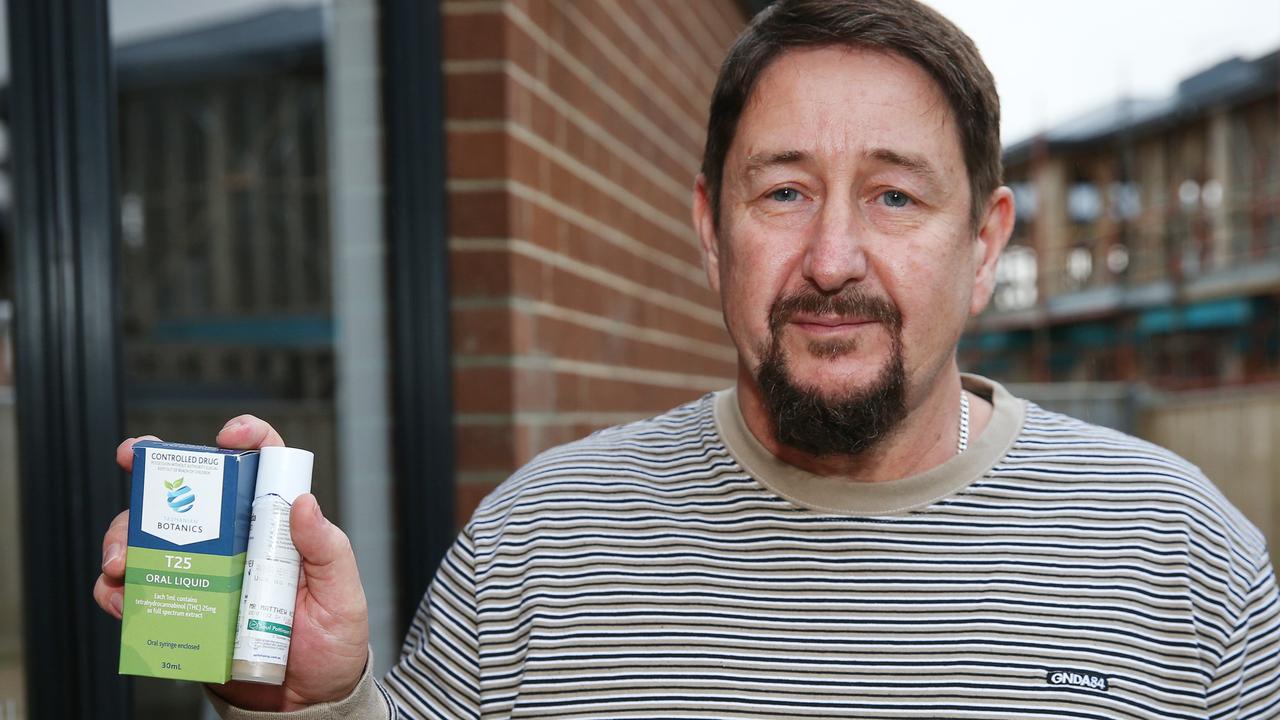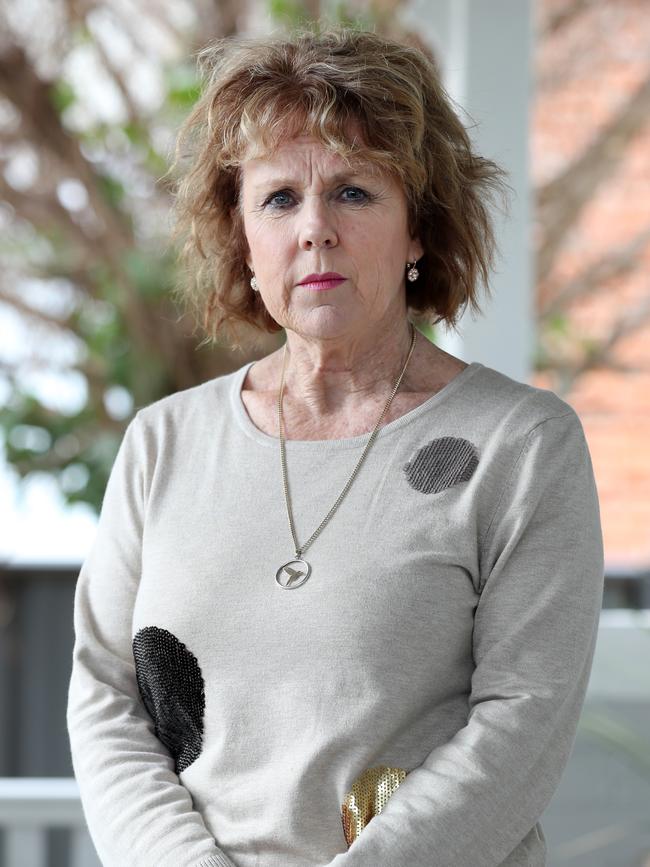Barriers facing Geelong patients seeking medicinal cannabis revealed
People in rural areas are using medicinal cannabis to help alleviate pain, but health professionals have revealed there are still big issues with accessing it.
Geelong
Don't miss out on the headlines from Geelong. Followed categories will be added to My News.
Demand for medicinal cannabis is increasing but patients still face access barriers, with few health professionals prescribing it in Geelong.
Olga Lutzko is an endorsed nurse practitioner specialising in medicinal cannabis based in Geelong.
She said she began prescribing medicinal cannabis about two years ago after scope for nurse practitioners was broadened in Victoria.

Among her patients is Lara 50-year-old Matt Niemke, who suffered nerve damage when scaffolding collapsed on him at a worksite about 20 years ago.
The damage in his lower spine also causes pain in his neck and legs, headaches and trouble sleeping.
“Sleeping tablets don’t work,” he said.
He has taken multiple medications including morphine, valium and Panadeine Forte.
He said while at the end of the day such medications did help, cannabis seemed to work quicker than tablets.
“The cannabis can help take the edge off pretty quickly,” he said.
Mrs Lutzko said patients were commonly coming to her with chronic pain and anxiety or depression.
She said patients often told her they wished they were on medicinal cannabis sooner.
“It’s an area I am a firm believer (in) but I do still believe it has to be interrelated with ‘pharmo’ medicine,” she said.
“It’s the last resort after trying any medication a GP or specialist have prescribed.”
She said she was starting to get more referrals as doctors get to know her.
“I want their GP or specialist to be on board if they get approved for usage,” Mrs Lutzko, who also specialises in diabetes, said.
Mrs Lutzko makes applications to the Therapeutic Goods Administration (TGA) for clients to be granted use of cannabis through its special access scheme.
Approved clients acquire their prescribed products at a pharmacy.
Mrs Lutzko was the only Geelong health professional prescriber listed on honahlee.com.au, a website that shows prescribers.
There were no “cannabis clinics” listed in Geelong on website cannareviewsau.co, but there were a number in Melbourne that offered telehealth consults.
Mrs Lutzko understood there were not many health practitioners in Geelong who prescribed medicinal cannabis, and believed there were not many with expertise in the area locally.
“A lot of doctors are very reluctant to go the next step,” she said.
Mrs Lutzko estimated her patients had a 97 per cent success rate with medicinal cannabis.
Mr Niemke was prescribed by Mrs Lutzko and received his products in July.
“So far its been really good especially when you get that horrible pain up and down through the legs,” the disability worker said.
“It makes pain bearable.
“The cannabis doesn’t completely take it away but it makes it more manageable.”
Mr Niemke connected with Mrs Lutzko after a client had positive results with medicinal cannabis, and his doctor is aware of his use.
“The only problem is the expense of it – it is expensive,” he said.
A small 30ml roll-on product cost him about $100 while a 30ml oil was about $89, he said.
He estimated he would get about a month out of each product, but hoped he could use it more sparingly in summer when warmer weather reduced pain.

Mr Niemke, who also does exercises in water for his condition, said he looked into accessing medical cannabis some time ago, but was put off by stigma.
“If more people were open minded to it you’d probably have less people stuck at home on the couch,” he said.
The federal government legalised access to medicinal cannabis in 2016.
A federal health department spokesman said to date, most prescriptions for medicinal cannabis were for ‘unapproved’ products.
“These medicines are accessed through the Special Access Scheme (SAS) and Authorised Prescriber scheme,” he said.
“Up to the end of July 2022, the TGA has approved more than 270,000 SAS Category B applications and 1304 authorised prescribers, across every state and territory, have been approved to prescribe medicinal cannabis to a patient.”
“The SAS B is an application pathway through which a registered health practitioner may apply to the TGA for approval to prescribe an unapproved medicinal cannabis product for a patient under their care.
“The Authorised Prescriber scheme enables the TGA to grant a medical practitioner authority to prescribe a specified ‘unapproved’ medicinal cannabis product for particular indications to a class of patients in their immediate care.”
There are two registered prescription-only medicinal cannabis products that have been approved by the TGA and included in the Australian Register of Therapeutic Goods.
Sativex is used to treat certain multiple sclerosis symptoms and Epidyolex is used for patients with certain epileptic conditions.
Western Victoria Primary Health Network clinical spokeswoman Anne Stephenson said due to public interest in cannabis as a medical therapy, demand was increasing and medical professionals were frequently being asked to prescribe medical cannabis.
“However, most medical professionals do not prescribe medical cannabis,” the local GP said.
“This is an emerging field of medicine which many doctors are not confident to use and are discouraged by the relative complexity of getting approval to use it.”
Dr Stephenson said people needed to see a doctor who was familiar with the safe use of medicinal cannabis and understood the correct process to gain access to the right medicine for the individual.
“There is still an approval process in place for some aspects of medicinal cannabis prescription, with different products containing different derivatives from the cannabis plant such as the psychoactive drug tetrahydro cannabinol (THC),” she said.
“While some people have experienced positive results from the use of medicinal cannabis,
the literature to support its use is still quite limited.
“Given it is an emerging field of medicine, many doctors unfamiliar with medicinal cannabis don’t see it as the first step in treating any illness.
“However, they may consider its use when other medicines have been tried and are unsuccessful in managing the patient’s symptoms or medical condition.”
Dr Stephenson said at this stage, most people appeared to ask to try medical cannabis as tool for pain management.
“It can also be used to help with epilepsy, nausea, and as a treatment for insomnia,” she said.
Medicinal cannabis could cause a range of unwanted side effects such as drowsiness, nausea and difficulty concentrating, she said.
Dr Stephenson noted there were some conditions that preclude use such as having experienced a previous psychotic episode.
A Senate inquiry was established to investigate medicinal cannabis access and its report, released in 2020, said the committee “received considerable evidence in relation to health practitioners refusing to prescribe medicinal cannabis to patients”.
“The committee heard on many occasions during the inquiry that patients had negative experiences with their GPs or specialists when they tried to discuss using medicinal cannabis as part of their treatment plan,” the report read.

“At best, patients are not being prescribed medicinal cannabis because their clinician acknowledges their lack of knowledge about medicinal cannabis, and may refer them to a
colleague or another health practice.
“At worst, the committee was told that patients were simply rebuffed and felt ostracised by the negative or dismissive attitude of the clinician they consulted.”
The committee heard many patients were choosing not to access medicinal cannabis legally due to the significant costs and the complexity of the legal access system, instead opting to self medicate with illicit cannabis, the report said.
Lucy Haslam, co-founder of advocacy group United In Compassion, said people in regional areas faced more access barriers.
These included driving – according to VicRoads, it is an offence for a person to drive with any amount of THC in their system, including from medicinal cannabis.
Public transport access meant this impeded people in regional areas, Ms Haslam said.
“The one good thing that came out of Covid was telehealth,” she said.
“The majority of prescribers are in Queensland where they are putting through a lot of patients.”
She said while in some ways this was a good thing in others it was to the detriment of patient care.
“Our hope is eventually more GPs and other specialists will feel inclined to want to prescribe.”
More Coverage
Originally published as Barriers facing Geelong patients seeking medicinal cannabis revealed







